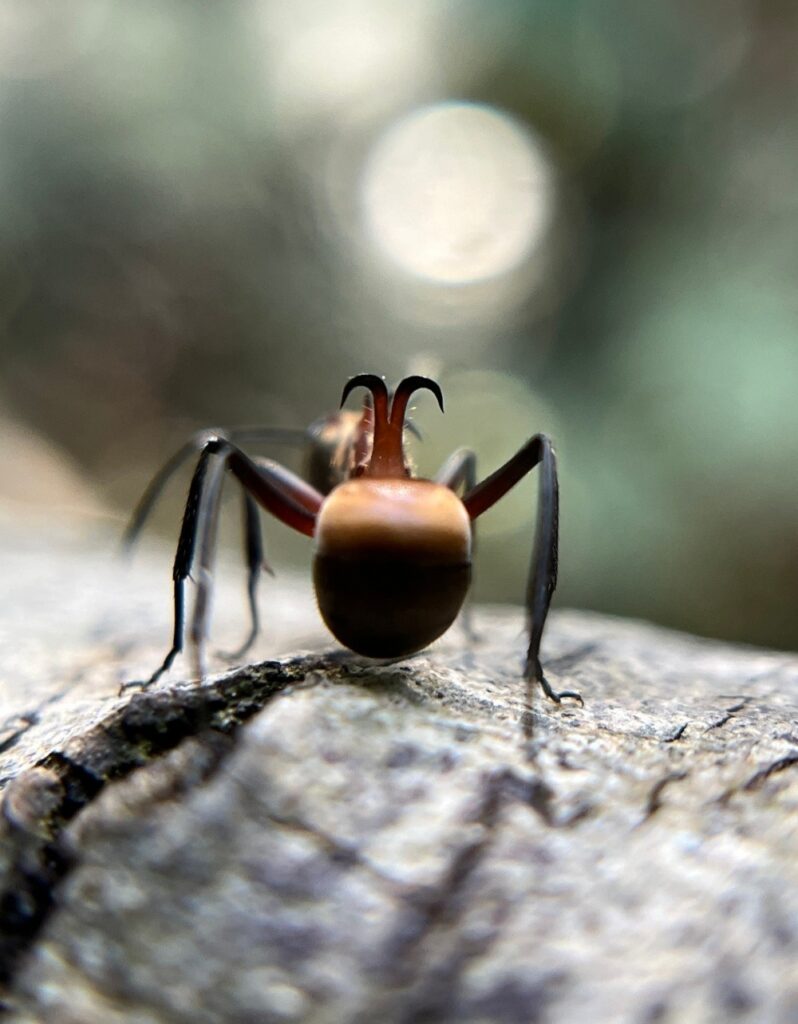
In the dense rainforests of Southeast Asia, a remarkable species of ant quietly goes about its daily life, demonstrating an astonishing array of skills and adaptations that have earned it the intriguing moniker – the Fishhook Ant (Polyrhachis bihamata). These ants are not just your run-of-the-mill insects; they are a testament to the ingenuity of evolution and the complexity of nature.
One of the most distinctive features of fishhook ants is their striking spiny postpetiole, situated between the abdomen and the thorax. The spines project outwards and curve backwards, forming sharp hooks that serve multiple purposes. These hooks are not just for show; they are capable of piercing through the toughest of skin and are known to lodge themselves into the throats of potential predators. If an unfortunate creature dares to take a bite, the ant’s instinctual reaction is to jerk around vigorously, inflicting cuts within the predator’s mouth. It’s a potent defense mechanism that few would-be assailants can overlook.

© Павлик ЛисицынHowever, the utility of these fishhook-like structures goes beyond defense. Fishhook ants employ them for anchoring themselves to various substrates, including the ground and each other. When faced with a threat, these ants will quickly mobilize, forming a living carpet of spikes by latching onto one another. This natural fortress of hooked ants serves as a formidable deterrent to any would-be attacker. Moreover, fishhook ants are not just armed with their hooks; they employ mandibles and stingers to deliver a painful venom to deter aggressors effectively.
But the fascination with fishhook ants doesn’t end with their formidable defense mechanisms. These ants are master builders, capable of constructing intricate nests with impressive waterproofing capabilities. They utilize silk produced by their larvae to weave together a combination of plant materials, such as leaves, twigs, and grasses. This unique construction method not only provides structural integrity but also ensures that rainwater is kept at bay, preventing their nests from becoming waterlogged.

The diversity of fishhook ant nests is as astonishing as their defensive abilities and construction skills. These nests can vary significantly in size and shape, adapting to the availability of resources and the number of ants in the colony. Some nests are small and spherical, while others take on elongated forms. They can be found attached to tree branches, concealed underground, or nestled inside decaying logs. These intricate structures have multiple entrances and chambers, each serving a specific purpose, from food storage to brood rearing and resting areas.
Fishhook ants, like many other species, live in organized colonies with a distinct caste system. Within these colonies, you’ll find workers, soldiers, and a queen. The workers undertake various tasks, including foraging, nest construction, and caring for the young. The soldiers, larger and more heavily armed than the workers, take on the role of protecting the colony from potential intruders. The queen, the heart of the colony, is the sole fertile female responsible for laying eggs, ensuring the colony’s continuity.

Communication is key in the world of fishhook ants. They rely on chemical signals, or pheromones, to coordinate their actions. These ants collaborate seamlessly to achieve collective goals, be it locating food, erecting nests, or defending against adversaries. They embody a division of labor, where ants of different ages, sizes, or preferences perform specific roles within the colony. Their collective actions exhibit self-organization, revealing the emergence of complex patterns from seemingly simple interactions.
In conclusion, fishhook ants are not just ordinary insects; they are nature’s engineering marvels. Their multifaceted skills and adaptations offer insights into the evolution of social behavior, the mechanisms of collective intelligence, and the principles of biomimicry. These ants inspire us to rethink materials, structures, and even robotics, drawing from the brilliance of the natural world.

If you ever chance upon these incredible creatures in the wild, remember not to disturb them or their nests. Instead, take a step back, observe from a safe distance, and marvel at the beauty and complexity that is the world of fishhook ants.

Leave a Reply